PILLAR FIVE
Spiritual
Spiritual encompasses faith, energy, the life force of a person – all of which defines us as an individual and part of the collective.
Spiritual is where we come from.
Spiritual health responds to non-tangible practices represented through song, the elements, ancestral beings and higher powers.
This support and care is given throughout life, and as part of the transition to the afterlife.
Background: Fipe Preuss playing the Ipu (drum) during a live ritual on stage. Image by Rachel Main.
Veisinia Tonga is a Tongan Kakala artist and storyteller living in Naarm/Melbourne.
She is working to gain understanding and to help facilitate the transfer of knowledge from her cultural elders to the next generation.
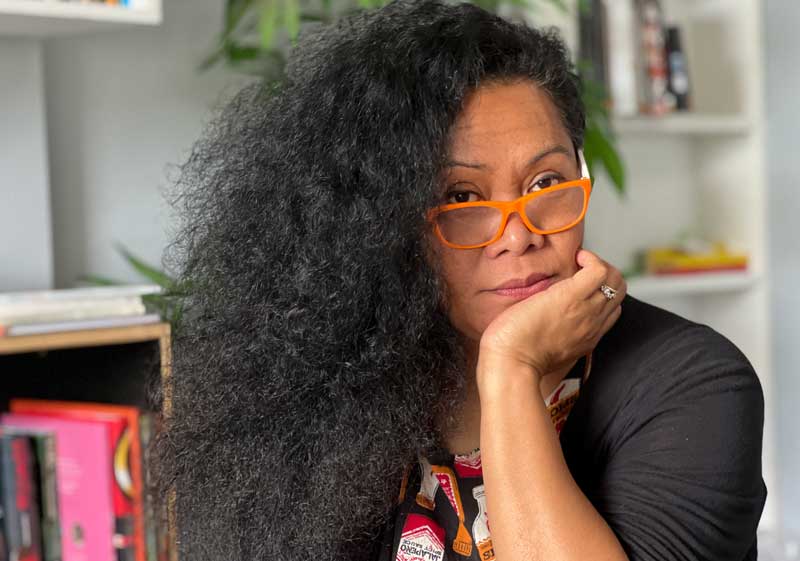
Veisinia Tonga at the Blak Academy. Image by Irihipeti Waretini.
“From a holistic perspective, our culture and our values are medicine and healing for us, recentering and honouring our cultural beliefs in the face of colonialism is a way to heal ourselves.”
“Symbolism and legends and cultural meanings [are] embedded in our creations. A thing becomes a thing of Mana through the intention of the maker and from the legends and stories it represents and we should work to re-center this in our creative practice.”
“I am creating an installation of branches of Heilala. To be titled ‘Toli’ (to pick/harvest). In honour of the symbiotic relationship we have with nature and the recognition that these are gifts from our gods.”
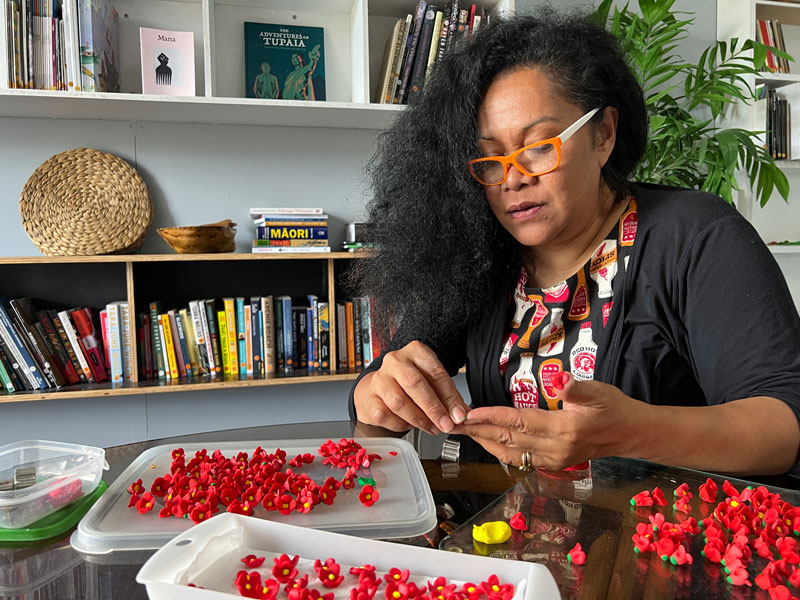
Veisinia is hand-making small clay Heilala flowers. Image by Irihipeti Waretini.
“My healing journey comes from an understanding that our cultural creative practice and co-working/ collective creative practices are essential for our mental health. It’s in these spaces that we share our emotional burdens with each other and it is where we find our joy. I am also working on documenting our cultural healing plants and their uses in order to record knowledge for the next generation.”
Veisinia has written about the sacred Heilala flower and Kahoa.
Background: Sacred Heilala flowers, made from clay by hand, with bright red petals and yellow centres. Image by Irihipeti Waretini.
Whakairo (carving) is within the realms of Tāne (the God of the Forrest) and taps directly into mātauranga Māori (sacred teachings) and whakapapa Māori (ancestry and Māori creation
stories).
Under the tutelage of Kaiwhakairo (carver) Paparati (Eddie Merito – Ngāti Pūkeko, Ngāti Awa & Ngāti Tūwharetoa), Hayes Keepa (Ngāti Pikiao) established his own practise making many taonga for community and teaching tauira of the Narrm based Mau Rākau School, Te Ara Hononga.
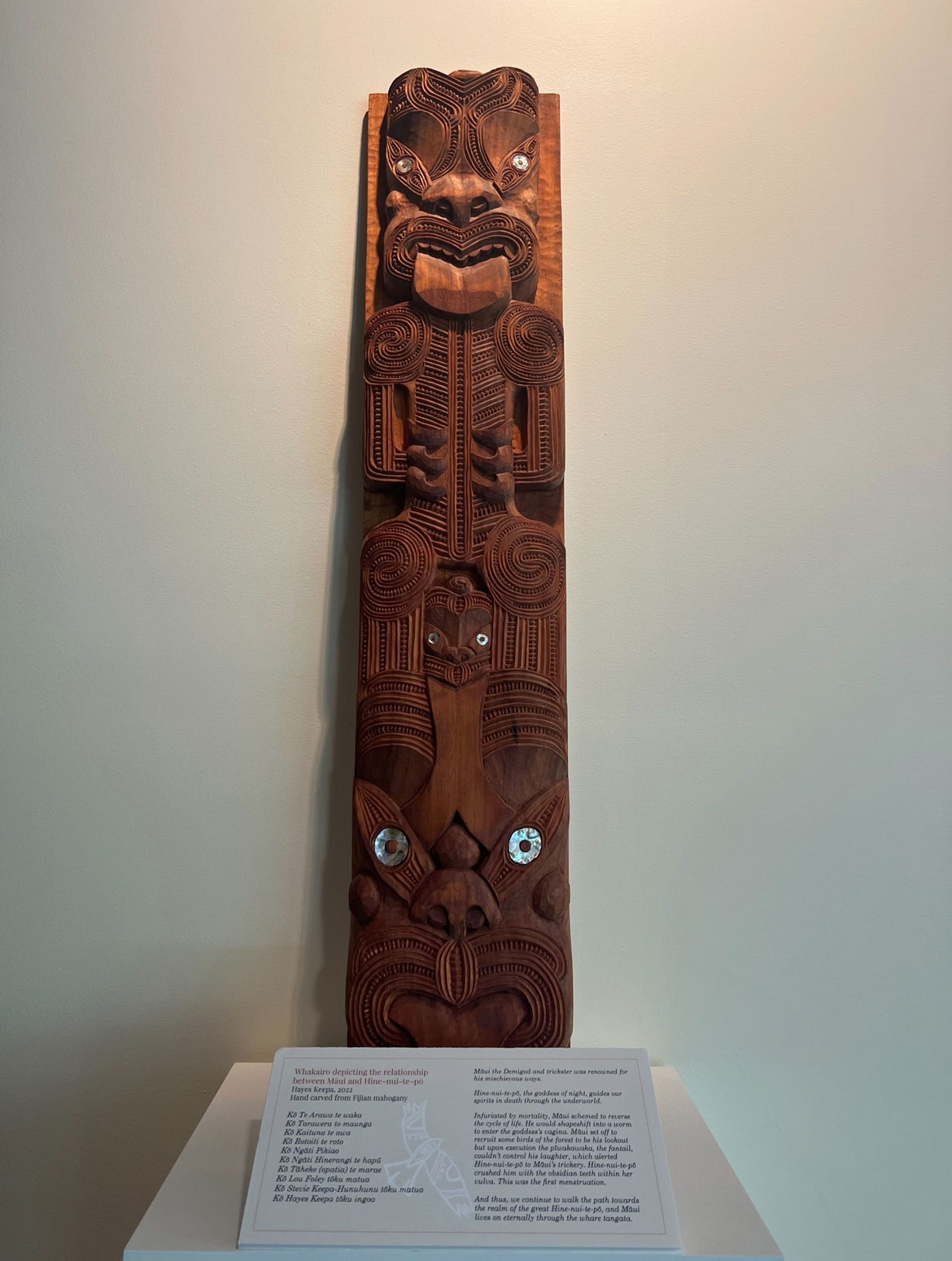
Whakairo by Hayes Keepa depicting the relationship between Māui and Hine-Nui-Te-Pō displayed at Geoffrey Kaye Museum.
Carving Gang is a collaboration between Kaiwhakairo Hayes Keepa
and Irihipeti Waretini (Ngāti Rangi).
Carving Gang shares Māori culture and traditional practises in
contemporary and creative settings.
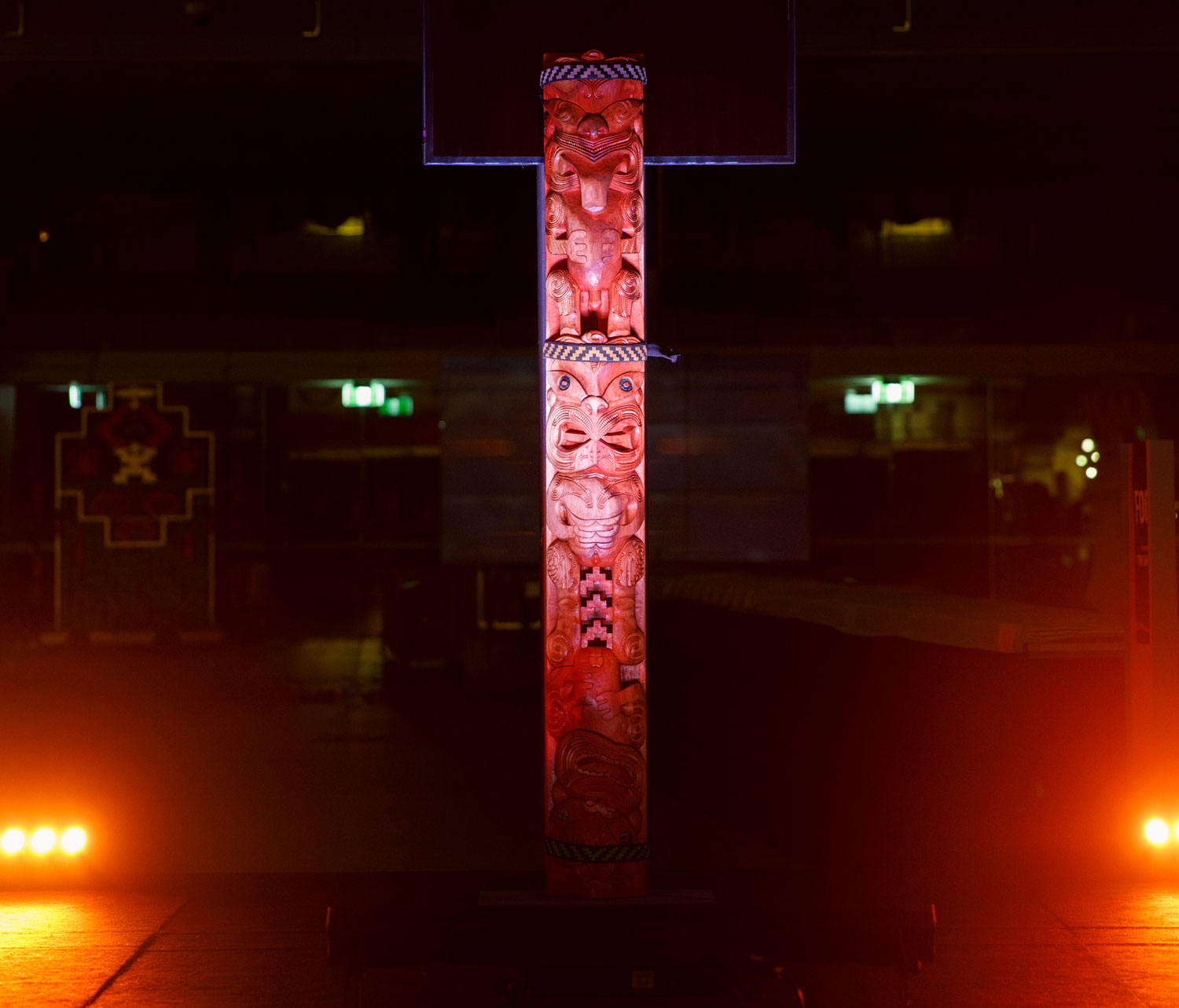
This 1.8m high wooden carving is named Pou Atakau: Guardian between worlds’ and interrogates the hidden narratives within Māori creation stories.
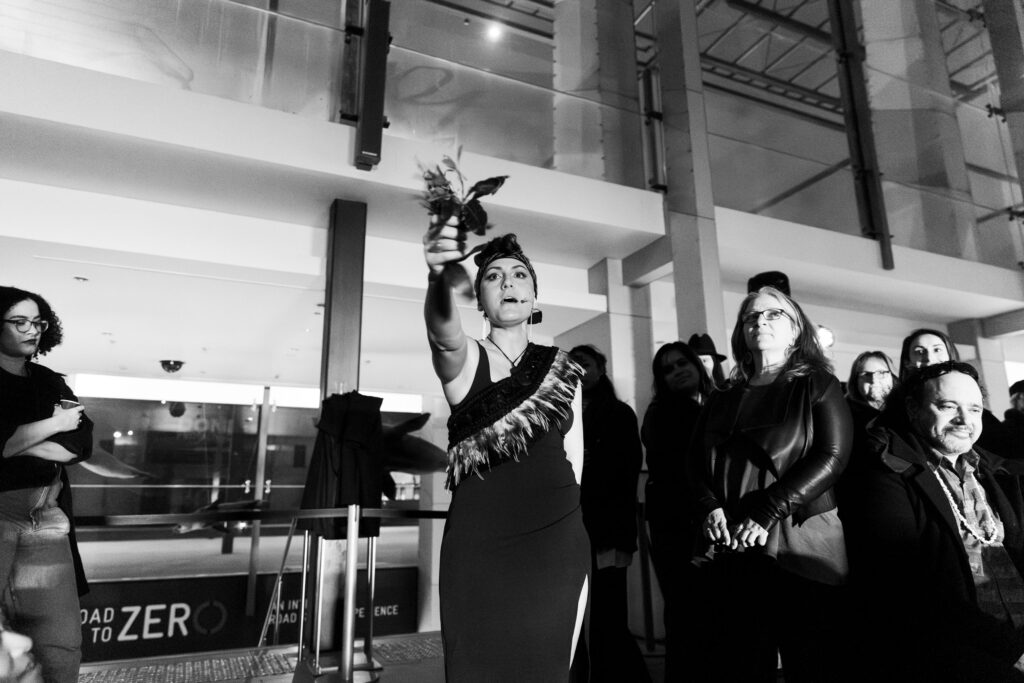
Carving Gang’s Pou Atakau was unveiled at the Melbourne Museum for Resonance. Irihipeti calls to the realms of the unknown where Hine-Nui-Te-Pō dwells, the Deity of the underworld. Asking for safe passage into the realms of the dark and unknown. Image by Gianna Rizzo.
“Our healing lies between the realms of the seen and the unseen, the darkness and the light. A big part of the healing process is calling ourselves into the protection of these spaces, through identity and storytelling. “
– Irihipeti Waretini
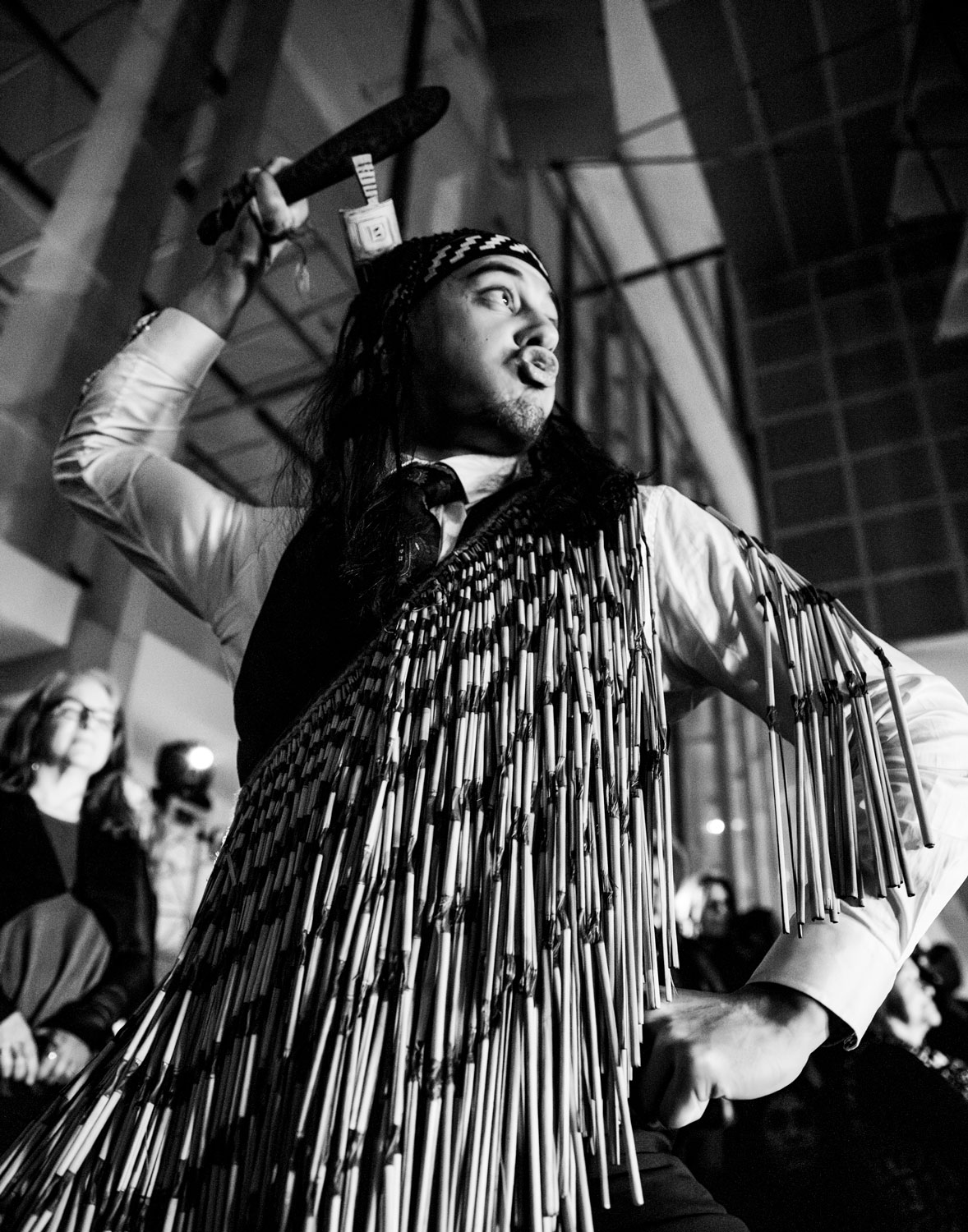
Image of Hayes Keepa, the toa (warrior) leads and
protects our path into the unknown.
Image by Gianna Rizzo.
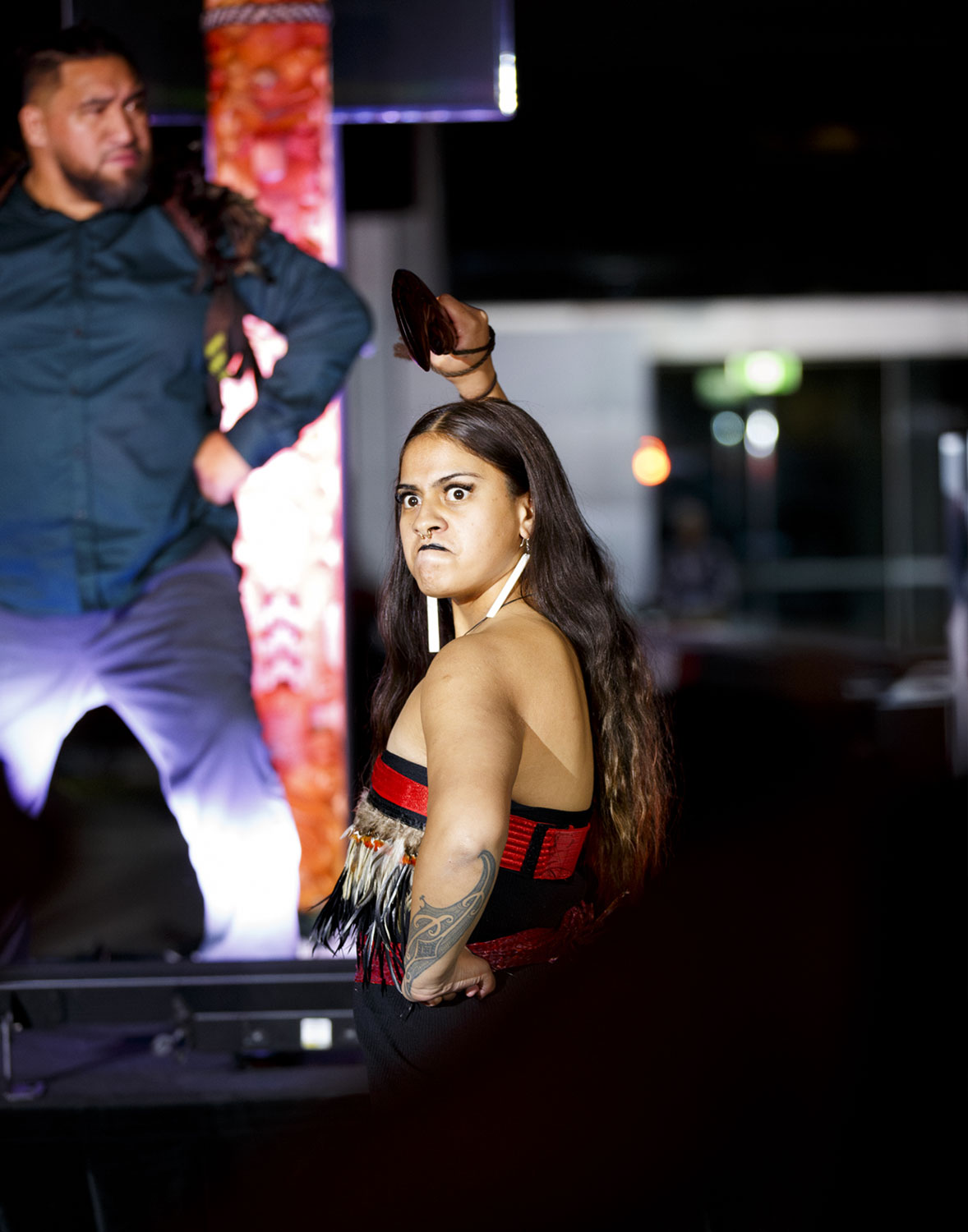
Image of Kaycee Merito (Daughter of Eddie Merito) with Te Ara Hononga, the wahine toa (warrior) receives us, protects our path and guards the Pou. Image by Gianna Rizzo.
Carving Gang aims to bridge the gaps for Māori Diaspora who long for reconnection to Te Ao Māori and their Māori identity, through pūrākau (storytelling), and akoako (knowledge exchange). Bringing the art and
practise of whakairo back into our homes.
Background: Photograph of Pou Atakau carving in progress.
Image by Irihipeti Waretini.
“My name’s Brent Watkins. On my father’s side I’m GunaiKurnai with connections to Yamatji Noongar on my mother’s side, but also still trying to find what other mobs we are connected to due to Stolen Generations. I grew up in Melbourne on beautiful Woiwurrung/Wurundjeri Country and also Boonwurrung Country, also on Yorta Yorta Country, Yorta Yorta Waka. I’ve got a lot of family up there so spent a lot of time growing up on Yorta Yorta Country.”
Brent is a dancer, didgeridoo player, visual artist, and educator. He is the creator of Culture Evolves, an Indigenous dance group which blends traditional and hip hop dance elements to share stories and empower Indigenous dancers and audiences.
Brent is deeply inspired by his Nan,
Rita Watkins.
“Growing up seeing her fight for Country and our people, a strong Kurnai woman…now it is my responsibility to fight for Country, for my son and generations to come.”
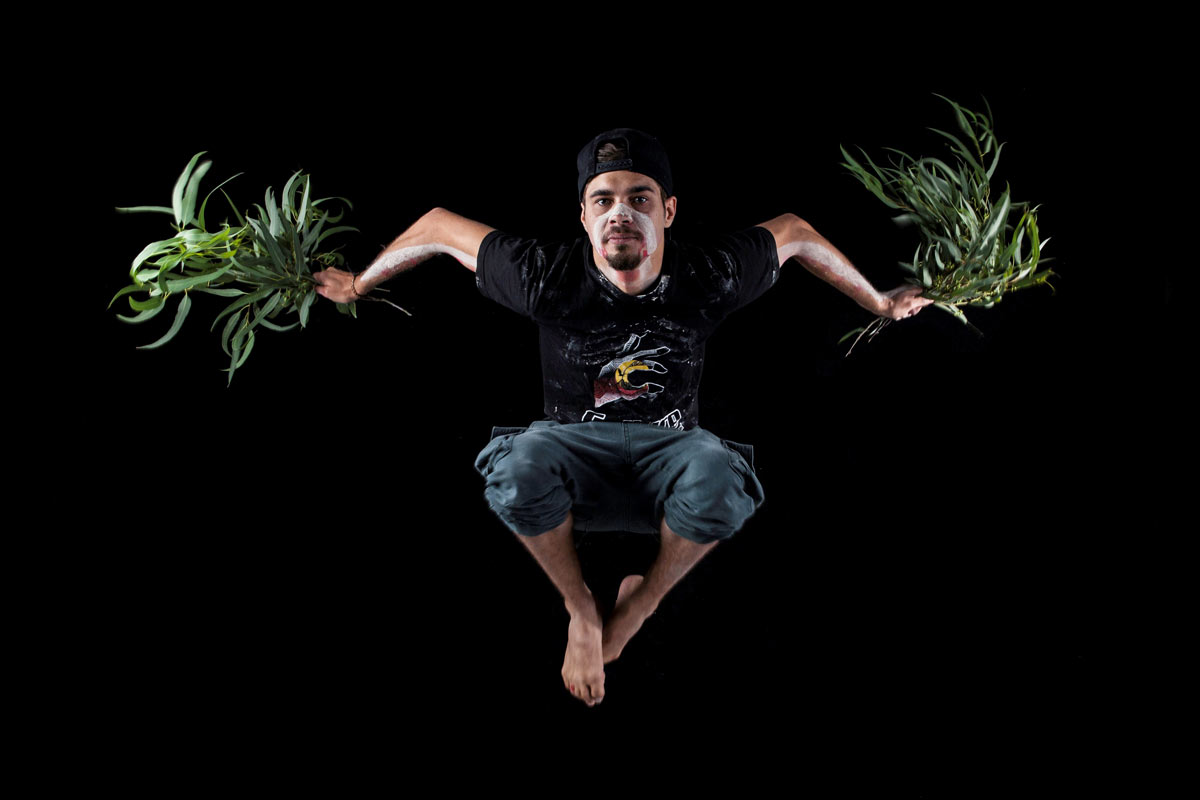
Brent flying. Image by Irihipeti Waretini.
“I dance to protest
I dance to heal
I dance to connect with creator
I dance for my ancestors
I dance for mother earth
I dance for ceremony
I dance for my people
I dance for my son”
“With all my practices, Yidaki, beat making, visual art, Aboriginal art, and the dance, the reason I practice them is to keep culture alive and for healing. I want to make sure my son, his son and the wider community, can access culture and pass down the knowledge so we don’t have that broken chain anymore.”
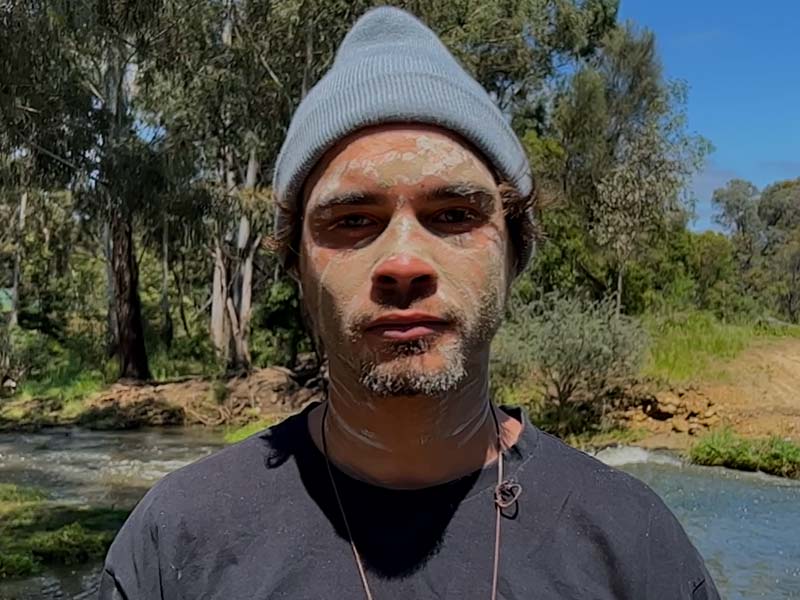
Brent’s face, painted up with ochre. Image by Irihipeti Waretini.
“Culture is the best way to heal. Get back to mother, putting your feet, putting your hands in the soil. Everything we get is from mother; our food, our clean water, the air, the trees, the oceans hold a lot of the carbon as well. We have nothing without mother. There’s a relationship that we need to have, and if we don’t have that relationship I believe we fall mentally and also spiritually as well.”
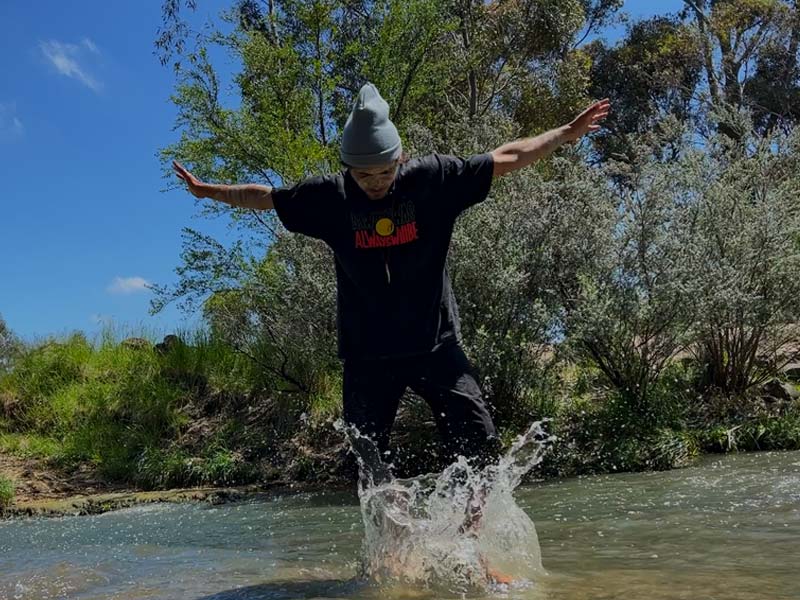
Brent dancing in water. Image by Irihipeti Waretini.
“Growing up I wanted to learn more and more and more about our culture but, sadly, there’s only certain pockets where sometimes you can go to. There’s actually no word for the feeling of when you’re doing culture. We need to get back to that healing through our practices, songlines, dance.”
Brent prepared a healing meditation and created a dance to go with it. Watch and listen below.
Background: Brent dancing on a rock formation at the top of a small waterfall. Image by Irihipeti Waretini.
EXPLORE THE FIVE PILLARS
Symbolism by Mandi Barton.
